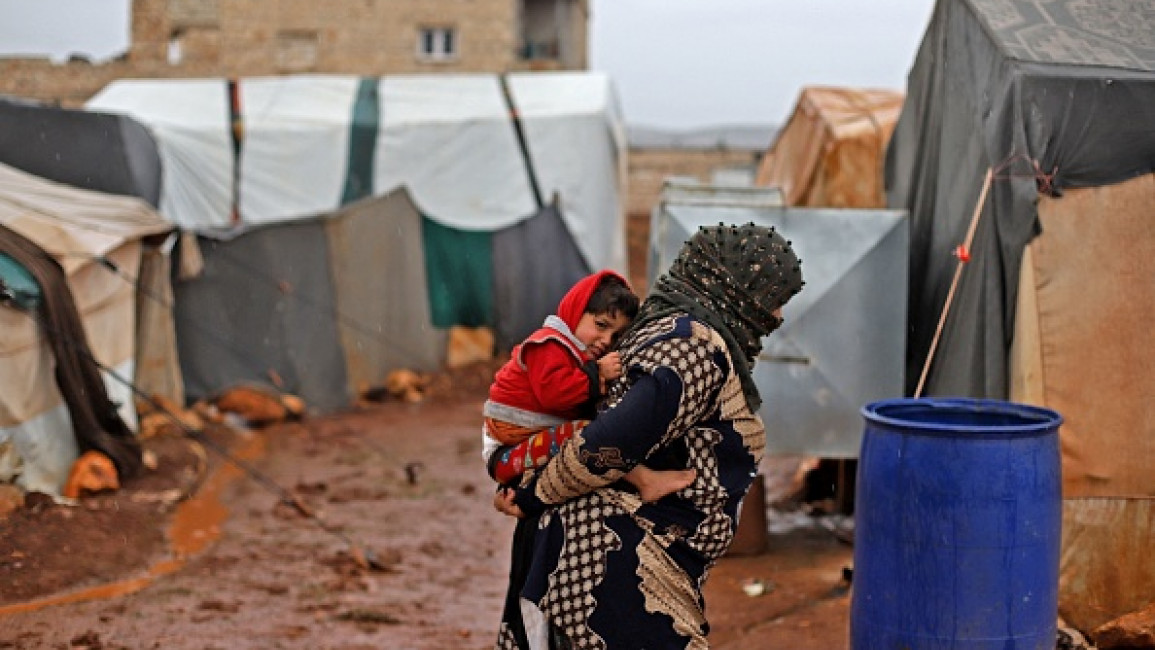Autumn rains wreak havoc in refugee camps across northern Syria
Heavy autumn rains caused destruction across refugee camps in northern Syria on Saturday and Sunday, amid warnings from the UN of "one of the harshest winters" across the country.
More than 62 tents have been completely destroyed by rains across the region, according to local officials.
"It’s impossible to cope. The rains have destroyed our tent and all the things that made it home. I’ve had to take my children to a new tent for all the families who’ve been hit by the flooding," said Khadija, mother of three in al-Tala’i refugee camp, Hasakeh province.
Local health official Dula Mohammed Ali told al-Araby al-Jadeed: "The rainstorm that hit al-Tala’i has caused chaos. Many families have had their homes destroyed and swept away."
"Families have been moved to higher ground, out of the swamps of water that have developed in the lower areas of the camp since the flood," said Ali.
Al-Tala’i camp, one of the many in al-Hasakeh province, is host to over 14,000 Syrian refugees staying in just under 3,000 temporary tent structures. In the latest rains, more than 20 tents in al-Tala’i were ruined.
The United Nations have said they expect the coming winter to be “one of the harshest winters” for Syria since the country was plunged into civil war in 2011.
Warnings have been issued of "catastrophic fuel and electricity shortages" that have increased year on year.
"Temperatures routinely fall below freezing in the elevated, mountainous parts of the country whilst the plains are prone to flooding," said a recent report.
Over 19 refugee camps have been hit by the recent flooding across northern Syria, as the U.N. called for emergency financial support for over 6 million people in Syria - 2.5 million of whom live in the northwestern regions of the country, outside of the Syrian regime’s control.



